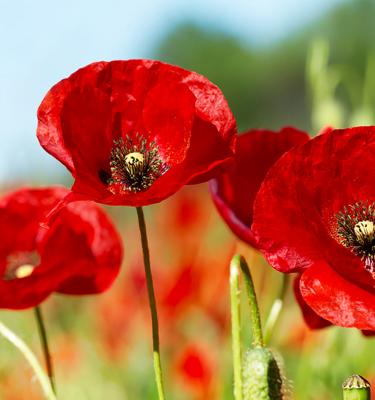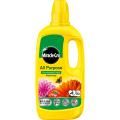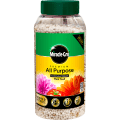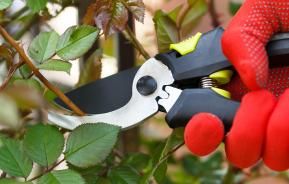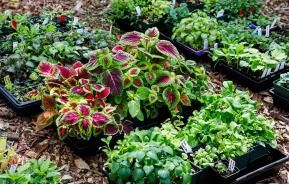Poppies are beautiful flowering plants that can create an attractive and vibrant border or display in your garden. Across the world, poppies are valued by many cultures and religions all for different reasons, with some relating to their colours and medicinal attributes.
Throughout history, they have been associated with mythology, religion, politics and medicine, which has created multiple forms of symbolism for the poppy. One such example of this is the symbolisation of poppies around Remembrance Sunday in November.
There are over 100 species in the poppy family, including annuals, biennials and perennials. The most commonly known sub species of poppy plants are Papaver Somniferum (Opium Poppy), Papaver Rhoeas (Corn Poppy, Flanders Field Poppy) and Papaver Orientale (Oriental Poppy).
Tips for growing poppies
Poppy seeds need a good amount of light daily to assist with germination, so be sure to plant them in an area that has at least 6 hours of light a day.
However, it is also important to ensure the temperature is not too high, as this can damage the chances of healthy growth. For areas with more intense heat, plant in partial sun.
When growing poppies in the UK, they thrive best when planted between March and May, and August and September.
The majority of poppy species prefer slightly dry, well-drained soil and will only need fertilising once a year as they are able to survive even in poor soil.
Mix the poppy seeds with sand to help spread them more evenly in the soil.
Poppy seeds grow best when sown directly into where they will be kept permanently, rather than being grown from seed trays.
Planting Poppies
The exact conditions required for planting and sowing your poppy seeds will depend on the species of poppy you wish to grow, and the location that they will be grown in.
The different species of poppy can be grown for their stunning array of shapes and colours, to harvest their seeds to use in baking and to encourage wildlife such as bees, butterflies and hummingbirds into your garden.
As with many versatile plants, these can be grown from seed in planters, pots, containers, as well as beds and borders in the garden or indoors.
Preparing to plant your seeds
Existing soil beds will need to be prepared before planting the seeds, as soil that is too rich in fertiliser or that has large amounts of clay will need to be adjusted.
Rake the area thoroughly to break up small lumps and then remove large lumps and stones. For areas with high amounts of clay in the soil, dig in at least 2 inches of compost to improve drainage.
Planting your seeds
Sprinkle your mixture of seeds and sand sparingly across your chosen area. This will help to reduce the need to thin the plants later on.
Dust a light amount of soil on top of the seeds (do not cover them) and gently firm it down to set the seeds in place. Water the area, keeping it moist but not soggy, to allow the seeds to germinate.
After germination and the plants have reached at least 5 cm in height, thin your plants to around 25-30 cm apart. At the end of the growing season, the plants can be cut back at the stems ready for new growth.
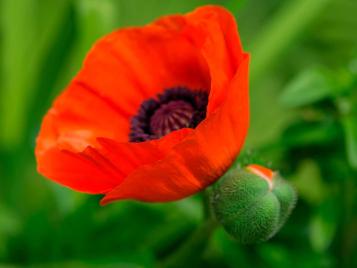
Then enjoy their natural beauty year after year!
Growing poppies in a container
This process is almost identical to that of growing poppies in a flower bed:
- Start by filling your container with unfertilised or lightly fertilised soil.
- Using the tip of your finger, make a shallow trench in the soil in which to plant the seeds.
- Sprinkle the seeds lightly into the trench and dust over with soil.
- Keep the soil moistened and in a sunny spot until the seeds have germinated.
- Once germinated and healthily established, thin the plants to around 10 cm apart.
- Water only when the top 1 cm of soil feels dry.
Care and maintenance
Poppies are fantastic self-sustaining plants that produce their own seeds and can, therefore reproduce each year with little assistance. Just leave a couple of spent flower heads at the end of the flowering season to encourage seed pods to form.
However, if you would prefer to re-plant different varieties of plants each year, remove any dead flowers by breaking the stalks a little below the head. This will help develop new flowers, extending the flowering period and preventing seed pods from forming. This is a process called ‘deadheading’.
